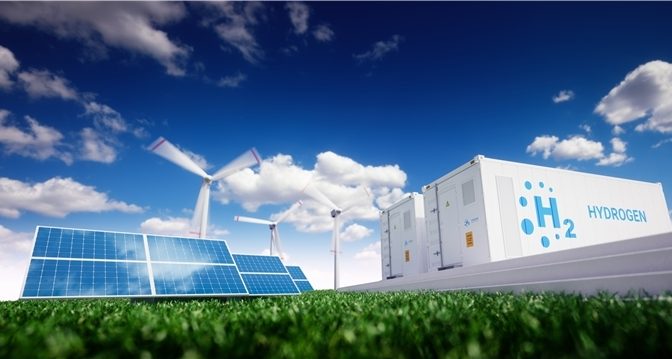Statkraft’s annual Low Emissions Scenario urges greater action to shift global course to come close to a 1.5-degree climate target. Renewables remain at the core of this strategy, but we won’t succeed without clean hydrogen, according to the report.
Opinion piece by Statkraft CEO, Christian Rynning-Tønnesen
The world has been called to arms, to work in unison to slow the warming of our planet. It’s the mission of a lifetime, one that will define our generation. But with the world slowly re-opening, so too are emissions returning to pre-pandemic levels, reinforcing our belief that the only way towards a 1.5-degree path is through the energy transition.
Our planet is currently on track to warm by 2.7 degrees. However, Statkraft’s Low Emission Scenario 2021 is cautiously optimistic, anticipating that a strong dynamic between policy, falling technology cost and effective market solutions will cut emissions further – making a 2-degree pathway within reach. Despite this potential progress, a 2-degree temperature rise will still have significant consequences for people and planet, and drastic action must be taken to redirect the planet to a 1.5-degree course.
The 1.5-degree target requires major transformation of global energy systems
The more liveable and less costly scenario for humankind is to limit warming to as close as possible to 1.5 degrees, a target that’s backed by the Paris Agreement and adheres to the dire warnings in the UN Intergovernmental Panel on Climate Change (IPCC) special report in 2021.
A 1.5-degree pathway will require rapid, drastic, and global transformation of our energy systems, to support an annual emissions reduction of six percent. This scenario can only be realised through greater investment into green technology, a significant increase in use of renewable power sources, and the electrification of essentially everything.
Hydrogen to serve as the fourth leg in a solar, wind and hydro powered world
In moving from a 2 to a 1.5-degree scenario, clean hydrogen plays a key role. This is at the heart of the 2021 Statkraft Low Emissions Scenario, now in its sixth iteration. The current 2-degree projection prepares for a power demand that will more than double by 2050, along with an expectation of renewables growth to six times today’s production volumes. Our report anticipates that this demand will be met by a 17 times increase in solar and wind production, and a doubling of hydropower, within the next three decades.
The path from a 2 to 1.5-degree scenario means that far more solar and wind capacity must be part of the solution by 2030. On top of that, new technologies need to quickly scale, including clean hydrogen – which is produced without emitting carbon and supports rapid decarbonisation of emissions-heavy sectors, including industry and transportation. In our Low Emissions Scenario, clean hydrogen must grow from zero to five percent of the total energy demand, and even more so if we are to come close to the 1.5-degree path.
Falling costs of clean hydrogen production expected to continue towards 2050
A contributing factor to the high cost of clean hydrogen are the electrolysers required for its production. Over the past five years, these costs have fallen by 60 percent, a decline that is expected to continue due to increasing automation, standardisation, and technology improvements. This is projected to yield an additional 60 percent cost reduction by 2050.
Clean hydrogen’s increasing affordability will lead to a more significant role in the energy system, according to the Low Emissions Scenario. The primary demand for clean hydrogen will be to replace fossil-based hydrogen for direct use, in ammonia, methanol, and refineries for example. New use cases also will emerge, such as for steel production and shipping. Clean hydrogen is a cost-effective alternative in sectors where electrification is challenging, such as in heavy industry or long-haul transport on land or sea. And it is one of the answers to balance out th[BM1] [FBA2] [BM3] e intermittency of sources such as solar and wind, helping to maintain steady supply and reduce seasonal power price fluctuation.
We have to act now
The path towards net zero is not only about achieving this target by 2050. What we do before and after that milestone is crucial, making our mission to rapidly reduce emissions even more urgent. At the time of writing, we are not keeping pace with the ambitions of the Paris Agreement, despite significant progress. The progress we have made so far must be compounded over the next decade to correct our course.
For the world to come close to a 1.5-degree target, we must prioritize the development and commercialisation of new technologies that are already proven, including clean hydrogen, to balance out a future powered primarily by renewable energy.
Statkraft is a leading company in hydropower internationally and Europe’s largest generator of renewable energy. The Group produces hydropower, wind power, solar power, gas-fired power and supplies district heating. Statkraft is a global company in energy market operations. Statkraft has 4,600 employees in 18 countries.


